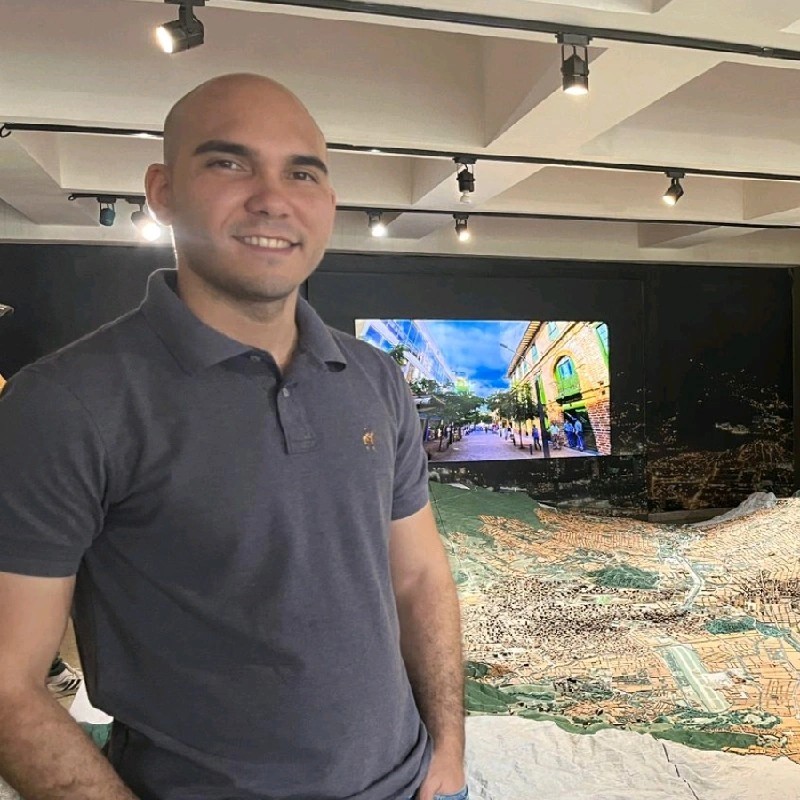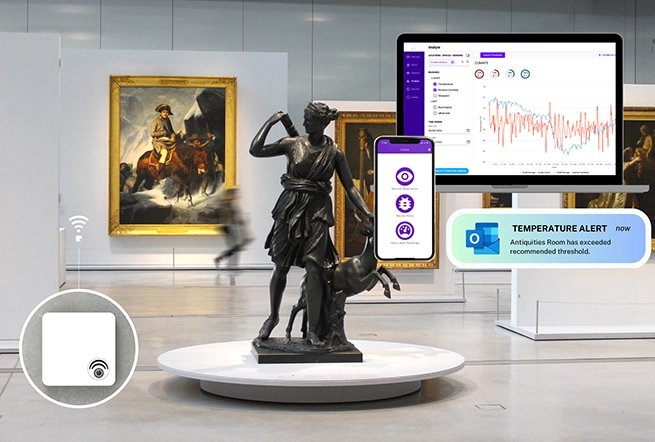Table of Contents
The Mona Lisa’s enigmatic smile. Ancient Egyptian artifacts that tell stories of civilizations past. First edition manuscripts that changed the course of history. These irreplaceable treasures face a silent enemy: the very environment meant to protect them. Temperature fluctuations, humidity changes, and light exposure slowly but steadily threaten the world’s cultural heritage. For Conserv, a company dedicated to protecting these invaluable collections through advanced environmental monitoring, good enough was never enough.
The Challenge: Elevating Environmental Monitoring
Conserv had already established itself as a trusted name in museum environmental monitoring. Their devices were deployed in galleries, archives, and cultural institutions worldwide. But they envisioned something greater: a transformation that would set new industry standards.
Their ambitious goals were clear:
Industry-Leading Battery Life: Museums and galleries needed monitoring solutions that could operate for years without maintenance. Changing batteries in display cases or storage areas isn’t just inconvenient. It risks disturbing carefully controlled environments and precious artifacts.
Enhanced Sensor Precision: When you’re protecting priceless collections, every fraction of a degree matters. Conserv sought to improve their sensor accuracy to provide conservators with the most reliable data possible for making critical preservation decisions.
Better Protection for Cultural Heritage: Ultimately, every technical improvement served one purpose: ensuring that future generations could experience these irreplaceable artifacts just as we do today.
The challenge wasn’t just technical; it was about reimagining what environmental monitoring could achieve in the service of cultural preservation.
Our Solution: Comprehensive Hardware and Firmware Evolution
When Conserv approached Croxel, they weren’t looking for incremental improvements. They wanted a partner who could deliver a comprehensive evolution of their monitoring platform. Our team embraced this challenge with a systematic approach that touched every aspect of the system.
Zephyr RTOS Implementation
At the heart of the transformation was the implementation of Zephyr RTOS. This modern, scalable real-time operating system provided the foundation for a firmware architecture that was both robust and future-ready. The benefits were immediate:
- Reliable, deterministic performance for critical monitoring tasks
- Modular architecture enabling efficient power management
- Built-in support for the connectivity protocols Conserv required
- A platform ready for future enhancements and features
Expert Low-Power Design
Achieving industry-leading battery life required more than just choosing efficient components. Our team applied systematic low-power design principles throughout the entire system:
- Optimized power delivery architecture
- Intelligent sleep modes and wake scheduling
- Efficient sensor sampling strategies
- Minimized quiescent current in all operating states
The result? We achieved sub-30μA power consumption, a remarkable feat that would enable the multi-year battery life Conserv envisioned.
Next-Generation Sensors
Enhanced precision meant rethinking sensor integration from the ground up. We implemented:
- Improved sensor interfaces for more accurate readings
- Advanced calibration techniques
- Optimized sampling and filtering algorithms
- Temperature compensation for environmental sensors
Every design decision focused on delivering data that conservators could trust for making critical preservation decisions.
Dual Connectivity: BLE & LoRaWAN
Museums and galleries have diverse infrastructure and needs. Our solution provided flexibility through dual connectivity:
LoRaWAN: For long-range, low-power communication ideal for large institutions
- Reliable data transmission through building materials
- Minimal infrastructure requirements
- Excellent battery efficiency
Bluetooth Low Energy (BLE): For convenient local access
- Direct data retrieval via mobile devices
- Easy deployment verification
- Backup communication method
This dual approach ensured that Conserv’s monitors could adapt to any installation environment.
The Development Process
True innovation happens through collaboration. Our partnership with Conserv exemplified how technical expertise combined with domain knowledge creates breakthrough solutions.
The development unfolded through careful phases:
Discovery and Analysis: We began by deeply understanding Conserv’s vision and the real-world challenges their customers faced. This wasn’t just about specifications. It was about understanding the mission of protecting cultural heritage.
Iterative Design and Refinement: Through multiple design iterations, we refined every aspect of the hardware and firmware. Each iteration brought measurable improvements in power consumption and performance.
Rigorous Testing: Museum environments are unique. We tested across temperature ranges, humidity levels, and real-world deployment scenarios to ensure reliable operation in any conditions.
Manufacturing Excellence: From the start, we designed with production in mind. This attention to manufacturability ensured a smooth transition from prototype to mass production.
Throughout the process, open communication and shared goals drove our progress. Weekly syncs, collaborative problem-solving, and a shared commitment to excellence defined our partnership.
The Result: Industry-Leading Performance
The numbers tell a powerful story of transformation:
Multi-Year Battery Life: We didn’t just meet the 3+ year battery life target. We created a platform capable of protecting collections for years without maintenance interruptions. The sub-30μA power consumption represents a dramatic improvement that sets a new industry standard.
Significantly Improved Data Precision: Enhanced sensor integration and calibration delivered the accuracy conservators need. When protecting irreplaceable artifacts, precision isn’t just a specification. It’s a responsibility.
Enhanced Protection: The combination of extended battery life, improved accuracy, and flexible connectivity means more comprehensive monitoring coverage. Areas that were previously difficult to monitor, such as inside display cases, storage areas, and remote galleries, can now be protected continuously.
Manufacturing Success: The smooth transition to production, combined with our ongoing support, ensures consistent quality in every device. This reliability is crucial when each monitor is responsible for protecting priceless collections.
But beyond the numbers, the real victory is in the impact. Museums and galleries worldwide now have access to monitoring technology that matches the importance of the collections they protect.
Looking Forward
The Conserv success story represents more than a technical achievement. It’s a testament to what’s possible when innovation serves a noble purpose. By revolutionizing environmental monitoring, we’ve helped ensure that future generations will continue to experience the wonder of our shared cultural heritage.
For Conserv, this transformation has opened new possibilities. The platform we’ve created together provides a foundation for continued innovation, ready to adapt as preservation science advances and museum needs evolve.
The techniques and expertise we applied to Conserv’s challenge, including ultra-low power design, precise sensor integration, modern firmware architecture, and reliable connectivity, are the same capabilities we bring to every client engagement.
Is your IoT device ready for its own transformation?
Whether you’re facing battery life constraints, seeking better sensor performance, or need to modernize your device architecture, Croxel has the expertise to elevate your product to industry-leading performance.
Contact us today to discuss how we can help you achieve your ambitious goals.
Related Topics
About the Author

Carlos Mejia
Director of Strategic Planning
Strategic planning executive with extensive experience optimizing processes and driving corporate initiatives across diverse industries. Combines expertise in technology-mediated project management with a focus on innovation and continuous improvement. At Croxel, Carlos leads strategic planning and account management efforts to enhance operational efficiency and develop value propositions for both internal teams and external clients.
Carlos Mejia has written 6 articles for Croxel Insights.
